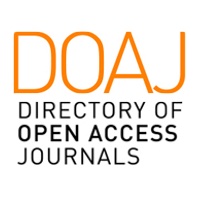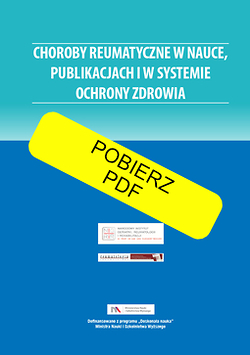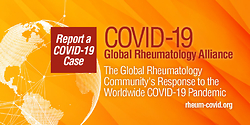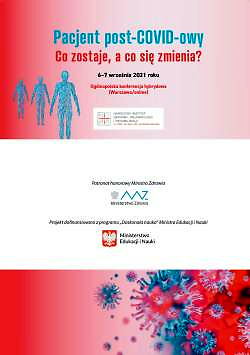Rheumatoid arthritis (RA) is a chronic disease of autoimmunity etiology, which, when severe, leads to disablement and premature death of patients. It is also the most common, potentially treatable, cause of severe joint functional impairment. The main causes why treatment is ineffective in remote prognosis include [1] inappropriate therapy and [2] introducing therapy relatively too late in the course of the disease. It is now believed that the treatment with drugs modifying the course of the disease should be introduced early, right after the onset of first manifestations, and should be continued with varied modifications throughout a patient’s life. When the treatment gradually stops being effective, it should be corrected by supplementation with a new drug or exchanged for another (‘saw-tooth’ strategy). This management of the disease is becoming more and more acceptable and applied in many countries [4, 5, 16-18].
At present methotrexate is believed to be the basic drug modifying the disease. The main mechanism of its action is inhibiting the production of interleukin 1 by monocytes and macrophages. Yet methotrexate alone rarely results in full remission, and the improvement is often below 50% [16]. It should then be combined with another drug so that its efficacy will be better. Cyclosporine A seems to be a good candidate for this purpose, since it mainly acts via inhibiting interleukin 2, 15 and TNF-alpha produced by T lymphocytes and synoviocytes. When used in monotherapy, cyclosporine A proved effective both in early and severe RA.
The most important problem is its nephrotoxicity, expressed by higher serum creatinine concentration and arterial hypertension. These complications can be managed when the dose of the drug is reduced. Many reports point out that even low dosage of the drug is able to delay erosion formation. Since methotrexate and cyclosporine A have different mechanisms of action, and their adverse effects do not overlap, when used together their effect may add up [6, 8, 12, 19-21]. Other combinations of basic drugs are also acceptable; it has been proved that their efficacy is higher whereas their toxicity is not. There is no consensus, though, on when and which combined treatment should be applied, and what should be the order in which drugs are combined. The experience in this field has been relatively small so far, and the findings are ambiguous [4, 5, 10, 13].
The aim of the present study was to assess whether adding cyclosporine to the treatment with another basic drug (when the latter proved not fully effective) will result in clinical remission, and whether it will increase adverse effects.
Material and methods
The study comprised 29 patients (21 women and 8 men) suffering from rheumatoid arthritis diagnosed according to ACR criteria who, despite a 6-month treatment with full doses of at least one basic drug, continued to manifest an active inflammatory process in the form of:
1) six or more painful joints;
2) six or more swollen joints;
3) disease activity being assessed by a patient at more than 50 mm out of 100 mm in the pain Visual Analogue Scale (VAS);
4) disease activity being assessed by a physician at more than 50 mm in this scale;
5) ESR more than 28 after one hour or CRP concentration more than 2.0 mg/dl.
The criteria of exclusion from the study were as follows: previous treatment with cyclosporine, uncontrollable arterial hypertension, serum creatinine level over the standard 1.4 mg/dl. All the subjects included were treated at the Out-patient Clinic of the Department of Internal Diseases and Rheumatology of CSK MON.
The patients were aged between 18 and 81 years (mean 54.2), and the disease had lasted 2 to 27 years (mean 11.24). Radiographic examination of hand revealed lesions in Steinbrocker’s I in 4 subjects, II in 6, III in 12, and IV in 7. In the course of the disease Waaler and Rose test was positive in 24 subjects. At the time of inclusion all the patients were treated with steroids – the dose could not exceed calculated 15 mg of prednisolone per 24 hours, and it could be reduced to 10 mg/24h. If the dose had to be increased or another disease-modifying treatment introduced, the therapy with steroids was considered ineffective. Twelve patients were given methotrexate at 15-20 mg weekly, four – sulfasalazine at 2.0 g/24 h. The remaining 13 subjects were administered other basic drugs – one of them only prednisolone. The other 12 received drugs in combinations (methotrexate with sulfasalazine – 3, methotrexate with azathioprine – 1, methotrexate with chloroquine – 1, methotrexate with sulfasalazine and chloroquine – 1, methotrexate with chloroquine and pyritinol – 1, cyclophosphamide with chloroquine and pyritinol – 1, gold salts with pyritinol – 2, D-penicillamine with pyritinol – 1, sulfasalazine with pyritinol and chloroquine – 1).
The treatment with a basic drug was continued (when the treatment was combined it was the first drug mentioned, in 19 patients it was methotrexate), and initially daily a dose of 100 mg (1.5-2.0 mg/kg b.w./24 h) of cyclosporine was added (Sandimmun Neoral, Novartis). The dose was increased every 6 weeks by 0.5 mg/kg b.w./24 h, without exceeding the dose of 5 mg/kg b.w./24 h, until improvement was visible or adverse events appeared. Two weeks after the treatment introduction blood pressure and creatinine concentration were measured. When the parameters increased by 30% of the baseline values or exceeded the cut-off point (blood pressure >160/95 mm Hg; creatinine >1.4 mg/100 ml), the treatment was discontinued. During the therapy, these parameters were measured every 4-6 weeks.
The disease activity was assessed according to ACR criteria modified to the Clinic’s abilities [2, 7]:
1) number of swollen joints;
2) number of painful joints;
3) patient’s evaluation in the 100 mm scale (VAS);
4) physician’s evaluation in the 100 mm scale (VAS);
5) ESR and CRP levels.
The improvement was assessed individually for each patient with reference to the baseline examination using the following gradation: minor – by 20%, intermediate – by 50%, and substantial – by 70%. There had to be at least 3 above-mentioned criteria met (1st and 2nd were mandatory + one of the remaining ones).
The subjects’ condition was routinely evaluated every 6 weeks, but no less frequently than every 3 months. The analysis has included only those subjects who were examined at least three times.
In its aims, the study was:
1) to evaluate how effective treating with cyclosporine combined with another disease-modifying drug is;
2) to find what the effective dose of the drug in such a therapy is;
3) to find the frequency and character of relevant adverse events;
4) to analyse why the therapy has been discontinued.
Results
Until the results were analysed, the patients underwent the therapy for 4-69 months (mean 12.72 months). The results of the treatment are presented in Table 1.
The dose which was considered effective was 100 – 300 mg daily (mean 155 mg/24 h; i.e. 2.5-3.0 mg/kg b.w./24 h).
The reasons for therapy discontinuation are listed in Table 2.
The treatment was discontinued in 14 (48.2%) patients. Most frequently (in 7 patients, i.e. 24.1%) the cause was adverse effects. These included: urgency to urinate in 2 patients, reversible increase of creatinine concentration in 1, increase of arterial blood pressure in 1, vomiting in 1, hirsutism in 2. In 2 patients the therapy was discontinued due to lack of improvement after 3 months of treatment, in other 3 it was because their disease aggravated following a period of improvement. Thus the therapy failed in 5 patients (17.2%). Two subjects stopped taking the drugs without any reason. The remaining 15 patients are continuing the treatment.
Discussion
The temporary purpose of the treatment in rheumatoid arthritis is to manage the aggravation of the disease and to keep the improvement achieved. In this way a patient’s complaints are reduced and, in the long term, the formation of erosions is slowed down and so is the destruction of joints resulting in disability. Only a drug which delays the erosion formation within 2-3 years can be considered as one modifying the course of the disease. The following drugs have been proved to possess such features: gold salts, sulfasalazine, methotrexate, and other so called disease-modifiers, including cyclosporine. Although either cyclosporine or methotrexate rarely leads to full remission, the delay in radiographically confirmed erosion formation as early as after a year is visible when they are treatment active agents. In this respect the efficacy of cyclosporine is similar to that of other disease-modifying drugs including parenteral gold [3, 6, 9, 11, 22]. Erosion formation was even more delayed when methotrexate was combined with cyclosporine. This delay was significantly greater than when either of the drugs was used in monotherapy. Thus they might act synergistically [14, 20].
In the present study, using cyclosporine along with another basic drug (most often methotrexate) resulted in an improvement in most (82.8%) patients. A satisfying improvement (>50%) was rather uncommon since it was observed only in 11 out of 29 patients (37.8%). No beneficial effects were observed in 5 (17.2%) patients, which resulted in the discontinuation of their therapy. These results do not confirm those by other authors, which might be due to the fact that the present study included those patients who had not responded to other forms of treatment, including high doses of methotrexate or combined therapy sometimes with as many as four drugs. Marchesoni et al. [14] reported a satisfying improvement after combined treatment in 50% patients, in 47% it was substantial. These authors treated patients in an early stage of the disease. Similarly, Więsik-Szewczyk et al. [20] reported an improvement in 15 out of 16 patients. The improvement was as high as 70% in 66% of them. Also in this study the patients were in an early phase of RA. The remission persisted in as many as 41% of their patients after 2 years of treatment.
The present study has not included a radiographic analysis of lesions. A mean effective dose in the combined treatment was 2.5-3.0 mg/kg b.w./24 h, which concurs with other reports in literature [20].
The most frequent (24% of patients) cause of the treatment discontinuation was the development of adverse events. Other authors reported them in 10-23.3%, so less frequently or similarly to the group studied here, depending on a dose and the subjects’ pre-selection. In the present study, the subjects were negatively selected in an advanced stage of the disease, where complications observed in every fourth patient are relatively rare. Other authors point out that complications resulting from combined treatment are just as frequent or less than is the case following treatment with other disease-modifying drugs [6, 11, 15]. Just like it was reported by Marchesoni et al, no characteristic complications were observed. Hirsutism (2 patients) and urinary tract complaints (3 patients) were a little more frequent. Arterial hypertension and higher serum creatinine level were uncommon. Inexplicably, two patients stopped their treatment despite some observable improvement probably due to what they had read or been told by their families. Other authors reported much more frequent kidney dysfunction or hypertension, but they used a previously applied dose of 10 mg/kg b.w./24h [18, 21].
Summing up, cyclosporine in combined treatment can result in an improvement in patients who do not respond to other basic drugs. The effective dose of the drug is 2.5-3.0 mg/kg b.w./24 h. Adverse effects leading to drug withdrawal observed in every fourth subject, along with the lack of improvement, were the most frequent reason for treatment discontinuation. These results, though, have been biased by the fact that the study comprised subjects in a severe inflammatory state resistant to other forms of therapy. Once this context is considered, this mode of treatment is worth recommending to be applied more widely.
References
1. Cho ML, Kim WU, Min SY, et al. Cyclosporine differentially regulates interleukin-10, interleukin-15, and tumor necrosis factor a production by rheumatoid synoviocytes. Arthritis Rheum 2002; 46: 42-51.
2. Felson DT, Anderson J, Boers M, et al. American College of Rheumatology. Preliminary definition of improvement in rheumatoid arthritis. Arthritis Rheum 1995; 38 (6): 727-35.
3. Ferraccioli GF, Bambara LM, Ferraris M, et al. Effects of cyclosporine on joint damage in rheumatoid arthritis. Clin Exp Rheumatol 1997; 17 (suppl 1): S83-9.
4. Fries JF. Current treatment paradigms in rheumatoid arthritis. Rheumatology 2000; 39 (suppl 1): 30-5.
5. Garrood T, Scott DL. Combination therapy with disease modifying anti-rheumatic drugs in rheumatoid arthritis. BioDrugs 2001; 15: 543-61.
6. Gerards AH, Landewe RB, Prins AP, et al. Cyclosporin A monotherapy versus cyclosporin A and methotrexate combination therapy in patients with early rheumatoid arthritis: a double blind randomised placebo controlled trial. Ann Rheum Dis 2003; 62: 291-6.
7. van Gestel AM, Prevoo ML, van’t Hof MA, et al. Development and validation of the European League Against Rheumatism response criteria for rheumatoid arthritis. Arthritis Rheum 1996; 1: 34-40.
8. Hernandez GL, Volpert OV, Iniguez MA, et al. Selective inhibition of vascular endothelial growth factor-mediated angiogenesis by cyclosporin A: roles of the nuclear factor of activated T cells and cyclooxygenase 2. J Exp Med 2001; 193: 607-20.
9. Kim WU, Seo YI, Park SH, et al. Treatment with cyclosporin switching to hydroxychloroquine in patients with rheumatoid arthritis. Ann Rheum Dis 2001; 60: 514-7.
10. Kremer JM. Rational use of new and existing disease-modifying agents in rheumatoid arthritis. Ann Intern Med 2001; 134: 695-706.
11. Kvien TK, Zeidler HK, Hannonen P, et al. Long term efficacy and safety cyclosporin versus parenteral gold in early rheumatoid arthritis: a three year study of radiographic progression, renal function, and arterial hypertension. Ann Rheum Dis 2002; 61: 511-6.
12. Lavagno L, Bordin G, Colangelo D, et al. Tachykinin activation of human monocytes from patients with rheumatoid arthritis: in vitro and ex-vivo effects of cyclosporine A. Neuropeptides 2001; 35: 92-9.
13. Mackiewicz S. Reumatoidalne zapalenie stawów: koncepcje patogenetyczne i terapeutyczne. Konferencja Diagnostyka i terapia przewlekłych zapaleń stawów, Poznań, 3-4.04.1997.
14. Marchesoni A, Battafarano N, Arreghini M, et al. Radiographic progression in early rheumatoid arthritis: a 12-month randomized controlled study comparing the combination of cyclosporin and methotrexate with methotrexate alone. Rheumatology 2003; 42: 1-5.
15. Marra CA, Esdaile JM, Guh D, et al. The effectiveness and toxicity of cyclosporin A in rheumatoid arthritis: longitudinal analysis of a population-based registry. Arthritis Rheum 2001; 45: 240-5.
16. O’Dell J. Conventional DMARD options for patients with a suboptimal response to methotrexate. J Rheumatol 2001; 62 (suppl): 21-6.
17. Pope JE, Hong P, Koehler BE. Prescribing trends in disease modifying antirheumatic drugs for rheumatoid arthritis: a survey of practicing Canadian rheumatologists. J Rheumatol 2002; 29: 255-60.
18. Richardson C, Emery P. Clinical use of cyclosporin in rheumatoid arthritis. Drugs 1995; 50 (suppl 1): 26-36.
19. Spisani S, Fabbri E, Muccinelli M, et al. Inhibition of neutrophil responses by cyclosporin A. An insight into molecular mechanism. Rheumatology (Oxford) 2001; 40: 794-800.
20. Więsik-Szewczyk E, Olesińska M, Chwalińska-Sadowska H. Skuteczność i bezpieczeństwo stosowania cyklosporyny A (preparat Sandimmun Neoral) w leczeniu reumatoidalnego zapalenia stawów – doświadczenia własne. Reumatologia 2003; 41: 268-72.
21. Yocum D. Combination therapy with cyclosporin in rheumatoid arthritis. Drugs 1995; 50 (suppl 1): 37-40.
22. Zeidler HK, Kvien TK, Hannonen P, et al. Progression of joint damage in early active severe rheumatoid arthritis during 18 months of treatment: comparison of low-dose cyclosporin and parenteral gold. Br J Rheumatol 1998; 37: 874-82.
Copyright: © 2005 Narodowy Instytut Geriatrii, Reumatologii i Rehabilitacji w Warszawie. This is an Open Access article distributed under the terms of the Creative Commons Attribution-NonCommercial-ShareAlike 4.0 International (CC BY-NC-SA 4.0) License (http://creativecommons.org/licenses/by-nc-sa/4.0/), allowing third parties to copy and redistribute the material in any medium or format and to remix, transform, and build upon the material, provided the original work is properly cited and states its license.

 ENGLISH
ENGLISH












